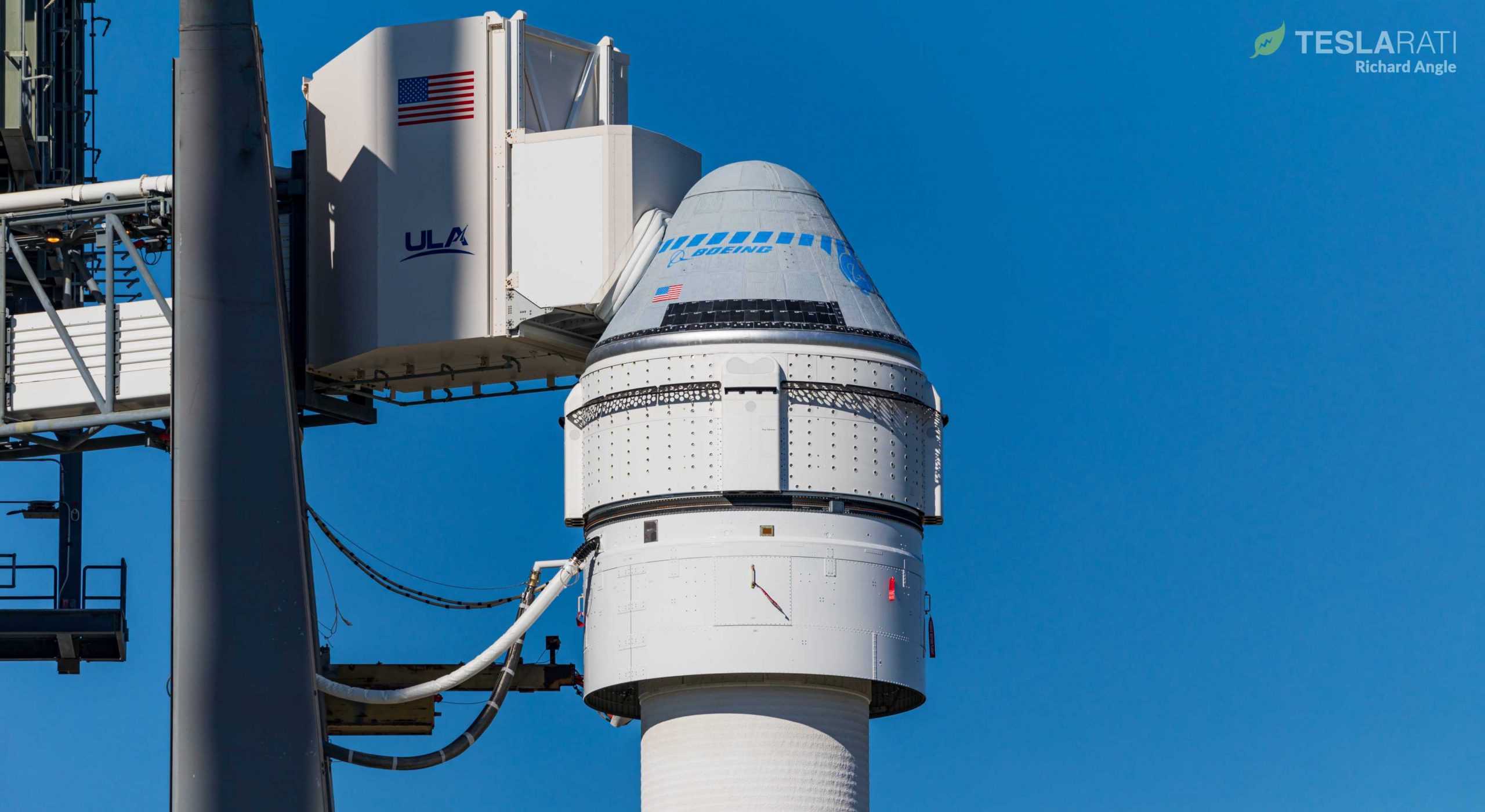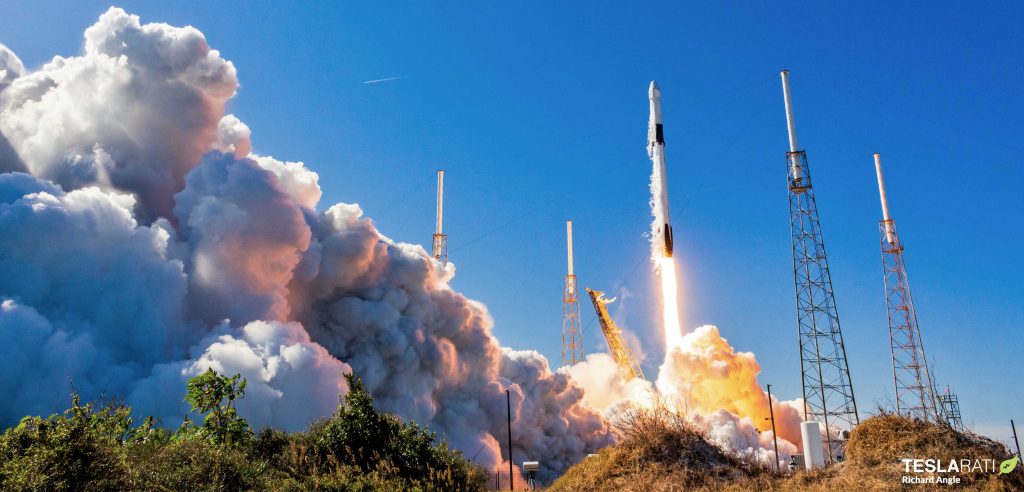

News
SpaceX and Boeing's crewed capsule race heats up with Starliner's Friday test flight
The first week of December kicked off a flurry of productivity for NASA Commercial Crew Program partners SpaceX and Boeing. Ahead of crewed astronaut flight in 2020, both partners are working toward the completion of integral test flights of the two crew capsules that will carry astronauts to orbit from American soil for the first time since 2011.
While SpaceX nailed down a firm targeted launch date for the upcoming in-flight abort (IFA) test of its Crew Dragon capsule, Boeing and launch provider United Launch Alliance (ULA) worked to complete what is known as an Integrated Day of Launch Test (IDOLT) – a standard procedure ahead of human-rated spaceflight.
This type of rehearsal was routinely completed during the space shuttle era – then referred to as Terminal Countdown Demonstration Tests. The IDOLT was a final major step ahead of the orbital flight test (OFT) of the Atlas V and Boeing Starliner capsule. The upcoming flight test will closely reflect procedures completed by SpaceX with the Falcon 9 and Crew Dragon capsule during its version of the orbital flight test referred to as Demonstration Mission – 1 which previously occurred in March of 2019.
Earlier in the week, ULA rolled out its mighty Atlas V rocket topped off with the Starliner crew capsule from the Vertical Integration Facility to the Space Launch Complex – 41 launchpad at Cape Canaveral Air Force Station. Once at the launchpad, the Crew Access Arm featuring a “white room” at the end that secures to the Starliner capsule to allow astronaut entrance was swung to the capsule for the very first time.
On Wednesday, December 4th, ULA and Boeing teams prepared to support the IDOLT, while SpaceX teams worked nearby at Space Launch Complex – 40 to support the CRS-19 resupply mission to the International Space Station. The simultaneous preparations resulted in the unique opportunity to view both rockets slated to support crewed astronaut flights in 2020 on launchpads and essentially prepared for flight.
While SpaceX ultimately successfully launched and landed a brand new Falcon 9 booster during the CRS-19 mission on Thursday, December 5th, a scrubbed attempt meant a one-day delay of launch which in turn resulted in a one-day delay for Boeing and ULA’s IDOLT and wet dress rehearsal (WDR).

The scrubbed launch essentially tied up range operations of the 45th Space Wing so that the area around the active launch pads – air, sea, and land – could not be secured for both events to take place on the same day. As the CRS-19 launch was an active operation for both SpaceX and NASA, it took precedence over ULA and Boeing’s rehearsal. Instead, Thursday was used to complete other necessary vehicle testing by Boeing and ULA.
Friday’s IDOLT ahead of Starliner’s flight debut for the OFT was a coordinated effort by NASA, Boeing, and ULA teams in multiple locations around the country.
The teams went through actual fueling procedures the Atlas V rocket and Centaur upper stage. Atlas V was filled with a type of rocket-grade kerosene propellant, RP-1, on Wednesday ahead of the IDOLT. The Centaur upper stage fully filled with cryogenic propellants – liquid oxygen (LOx) and liquid hydrogen.
Once fueling had completed Boeing’s “Blue Team” entered the pad to begin their synchronized rehearsal portion of the launch day sequence to prepare and secure the Starliner capsule and astronauts flying aboard.
Once the Blue Team completed all tasks and were evacuated from the pad, flight controllers from NASA’s Johnson Space Center in Houston, TX gave the “GO” command and proceeded with terminal count until reaching T minus-0 at which point the test concluded. The cryogenic propellants were drained and the vehicle was safed to be safely returned to the Vertical Integration Facility where final steps will be taken to prepare for launch.
The next time the teams will all work together in such coordinated fashion this will be on the day of launch. In mid-2020 the teams are expected to work together once again to support the Crewed Flight Test (CFT) which will send NASA astronauts Col. Mike Fincke, Nicole Mann, and Christopher Ferguson.
Until then, however, they will have to settle for the uncrewed test flight. According to ULA president and chief executive officer, Tory Bruno, post-WDR data evaluation and joint flight readiness review conducted by all teams involved are proceeding smoothly. Should all go to plan, the Atlas V and Boeing Starliner OFT will launch at 6:36 am EST on Friday, December 20th.
Check out Teslarati’s Marketplace! We offer Tesla accessories, including for the Tesla Cybertruck and Tesla Model 3.
News
Tesla begins Robotaxi certification push in Arizona: report
Tesla seems serious about expanding its Robotaxi service to several states in the coming months.

Tesla has initiated discussions with Arizona transportation regulators to certify its driverless Robotaxi service in the state, as per a recent report from Bloomberg News. The move follows Tesla’s launch of its Robotaxi pilot program in Austin, Texas, as well as CEO Elon Musk’s recent comments about the service’s expansion in the Bay Area.
The Arizona Department of Transportation confirmed to Bloomberg that Tesla has reached out to begin the certification process for autonomous ride-sharing operations in the state. While details remain limited, the outreach suggests that Tesla is serious about expanding its driverless Robotaxi service to several territories in the coming months.
The Arizona development comes as Tesla prepares to expand its service area in Austin this weekend, as per CEO Elon Musk in a post on X. Musk also stated that Tesla is targeting the San Francisco Bay Area as its next major market, with a potential launch “in a month or two,” pending regulatory approvals.
Tesla first launched its autonomous ride-hailing program on June 22 in Austin with a small fleet of Model Y vehicles, accompanied by a Tesla employee in the passenger seat to monitor safety. While still classified as a test, Musk has said the program will expand to about 1,000 vehicles in the coming months. Tesla will later upgrade its Robotaxi fleet with the Cyercab, a two-seater that is designed without a steering wheel.
Sightings of Cybercab castings around the Giga Texas complex suggests that Tesla may be ramping the initial trial production of the self-driving two-seater. Tesla, for its part, has noted in the past that volume production of the Cybercab is expected to start sometime next year.
In California, Tesla has already applied for a transportation charter-party carrier permit from the state’s Public Utilities Commission. The company is reportedly taking a phased approach to operating in California, with the Robotaxi service starting with pre-arranged rides for employees in vehicles with safety drivers.
News
Tesla sets November 6 date for 2025 Annual Shareholder Meeting
The automaker announced the date on Thursday in a Form 8-K.

Tesla has scheduled its 2025 annual shareholder meeting for November 6, addressing investor concerns that the company was nearing a legal deadline to hold the event.
The automaker announced the date on Thursday in a Form 8-K submitted to the United States Securities and Exchange Commission (SEC). The company also listed a new proposal submission deadline of July 31 for items to be included in the proxy statement.
Tesla’s announcement followed calls from a group of 27 shareholders, including the leaders of large public pension funds, which urged Tesla’s board to formally set the meeting date, as noted in a report from The Wall Street Journal.
The group noted that under Texas law, where Tesla is now incorporated, companies must hold annual meetings within 13 months of the last one if requested by shareholders. Tesla’s previous annual shareholder meeting was held on June 13, 2024, which placed the July 13 deadline in focus.
Tesla originally stated in its 2024 annual report that it would file its proxy statement by the end of April. However, an amended filing on April 30 indicated that the Board of Directors had not yet finalized a meeting date, at least at the time.
The April filing also confirmed that Tesla’s board had formed a special committee to evaluate certain matters related to CEO Elon Musk’s compensation plan. Musk’s CEO performance award remains at the center of a lengthy legal dispute in Delaware, Tesla’s former state of incorporation.
Due to the aftermath of Musk’s legal dispute about his compensation plan in Delaware, he has not been paid for his work at Tesla for several years. Musk, for his part, has noted that he is more concerned about his voting stake in Tesla than his actual salary.
At last year’s annual meeting, TSLA shareholders voted to reapprove Elon Musk’s compensation plan and ratified Tesla’s decision to relocate its legal domicile from Delaware to Texas.
Elon Musk
Grok coming to Tesla vehicles next week “at the latest:” Elon Musk
Grok’s rollout to Tesla vehicles is expected to begin next week at the latest.

Elon Musk announced on Thursday that Grok, the large language model developed by his startup xAI, will soon be available in Tesla vehicles. Grok’s rollout to Tesla vehicles is expected to begin next week at the latest, further deepening the ties between the two Elon Musk-led companies.
Tesla–xAI synergy
Musk confirmed the news on X shortly after livestreaming the release of Grok 4, xAI’s latest large language model. “Grok is coming to Tesla vehicles very soon. Next week at the latest,” Musk wrote in a post on social media platform X.
During the livestream, Musk and several members of the xAI team highlighted several upgrades to Grok 4’s voice capabilities and performance metrics, positioning the LLM as competitive with top-tier models from OpenAI and Google.
The in-vehicle integration of Grok marks a new chapter in Tesla’s AI development. While Tesla has long relied on in-house systems for autonomous driving and energy optimization, Grok’s integration would introduce conversational AI directly into its vehicles’ user experience. This integration could potentially improve customer interaction inside Tesla vehicles.
xAI and Tesla’s collaborative footprint
Grok’s upcoming rollout to Tesla vehicles adds to a growing business relationship between Tesla and xAI. Earlier this year, Tesla disclosed that it generated $198.3 million in revenue from commercial, consulting, and support agreements with xAI, as noted in a report from Bloomberg News. A large portion of that amount, however, came from the sale of Megapack energy storage systems to the artificial intelligence startup.
In July 2023, Musk polled X users about whether Tesla should invest $5 billion in xAI. While no formal investment has been made so far, 68% of poll participants voted yes, and Musk has since stated that the idea would be discussed with Tesla’s board.
-

 Elon Musk1 week ago
Elon Musk1 week agoTesla investors will be shocked by Jim Cramer’s latest assessment
-

 Elon Musk3 days ago
Elon Musk3 days agoElon Musk confirms Grok 4 launch on July 9 with livestream event
-

 Elon Musk14 hours ago
Elon Musk14 hours agoxAI launches Grok 4 with new $300/month SuperGrok Heavy subscription
-

 News7 days ago
News7 days agoTesla Model 3 ranks as the safest new car in Europe for 2025, per Euro NCAP tests
-

 Elon Musk2 weeks ago
Elon Musk2 weeks agoA Tesla just delivered itself to a customer autonomously, Elon Musk confirms
-

 Elon Musk1 week ago
Elon Musk1 week agoxAI’s Memphis data center receives air permit despite community criticism
-

 Elon Musk2 weeks ago
Elon Musk2 weeks agoTesla’s Omead Afshar, known as Elon Musk’s right-hand man, leaves company: reports
-

 News2 weeks ago
News2 weeks agoXiaomi CEO congratulates Tesla on first FSD delivery: “We have to continue learning!”



















